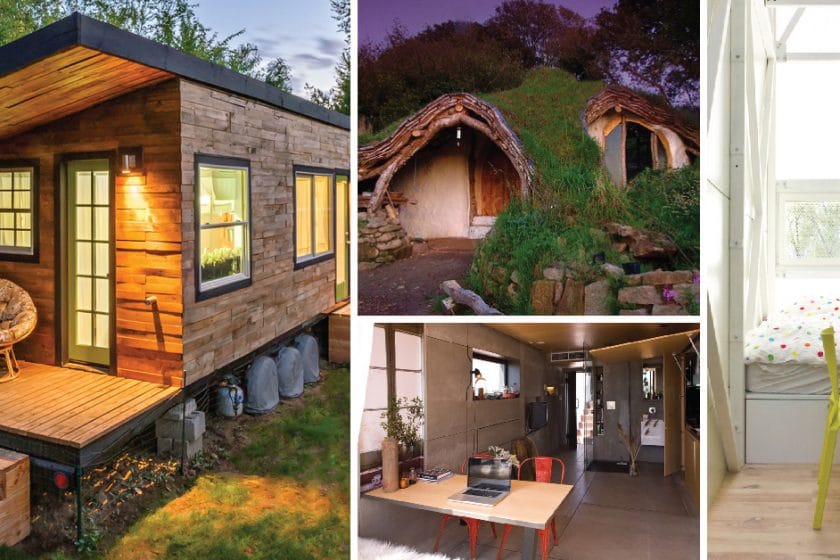Living in tiny houses does not sound very appealing, does it? Yet, the tiny house movement (yes, there is an entire movement) or the small house movement has revolutionised the way people approach housing across the world. It’s no longer looked upon as the result of economic weakness or relegated to predilections of hippies or eco-warriors.
It’s now considered cool, economical, and kind to the environment to stay in a tiny house. Here are some of the most interesting tiny houses from around the globe that will make you think twice about splurging on a 4-BHK apartment.
Hong Kong: Gary Chang’s Domestic Transformer
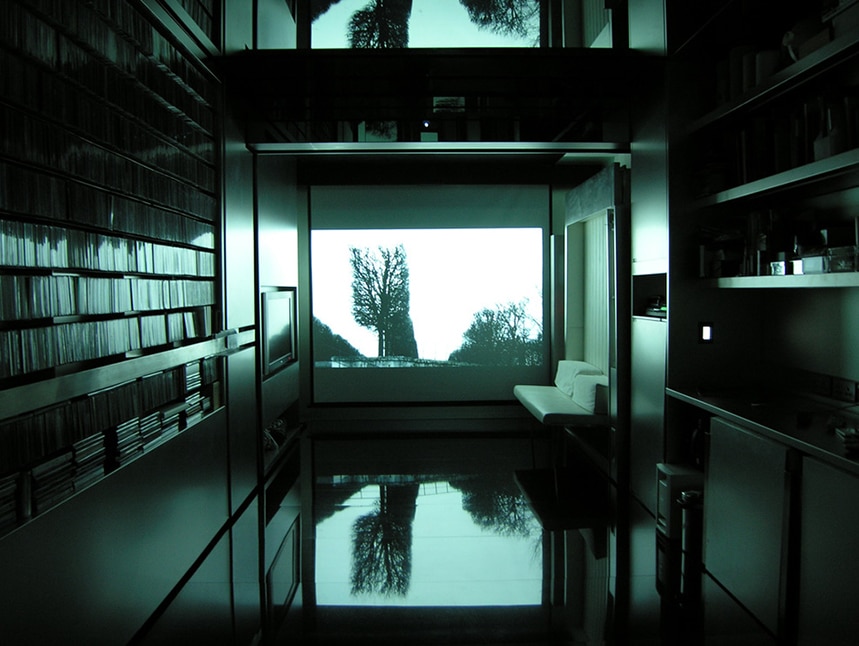
Hong Kong is like Mumbai when it comes to housing.
Space comes at a premium and living in matchbox-sized apartments are a given. Not so for Gary Chang, a renowned architect who specializes in tiny house designs. His own studio apartment is an extraordinary example of how every inch of space can be utilized to the utmost possible.
Chang’s apartment measures a mere 344 ft, but he has designed 24 rooms or spaces within that area. His apartment is ordinary looking until he begins to pull and slide and push every part of the apartment.
Named the Domestic Transformer, Chang’s apartment magically opens up into a kitchen, living room, game room, a spa, laundry room, bedroom, gaming room and many others as he glides around adjusting furniture and slides walls back and forth. The sliding walls incorporate storage, and there’s even 180 ft left unused to give the notion of space.
Barcelona, Spain: Christian Schallert’s Lego Apartment
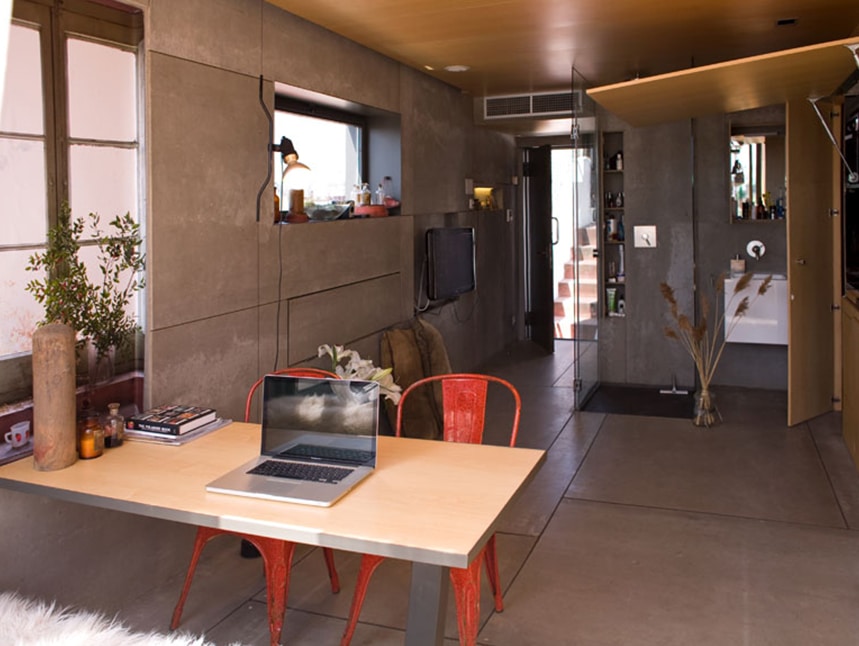
Ever considered living in a pigeon loft? Guess not. But if you see how Barcelona-based photographer Christian Schallert and architect Barbara Appollini have transformed this 258 sq ft space into a sleek, elegant home, you would definitely think again.
At one glance, the apartment looks empty and lined with a lot of wooden panels. But behind those panels lie the entire house.
The panels can be gently pressed open and contain closets, a fridge, storage space, and a kitchen. The bed in this Lego style apartment, get this, can be pulled out from under the terrace.
Weil am Rhein, Germany: Renzo Piano’s Diogene
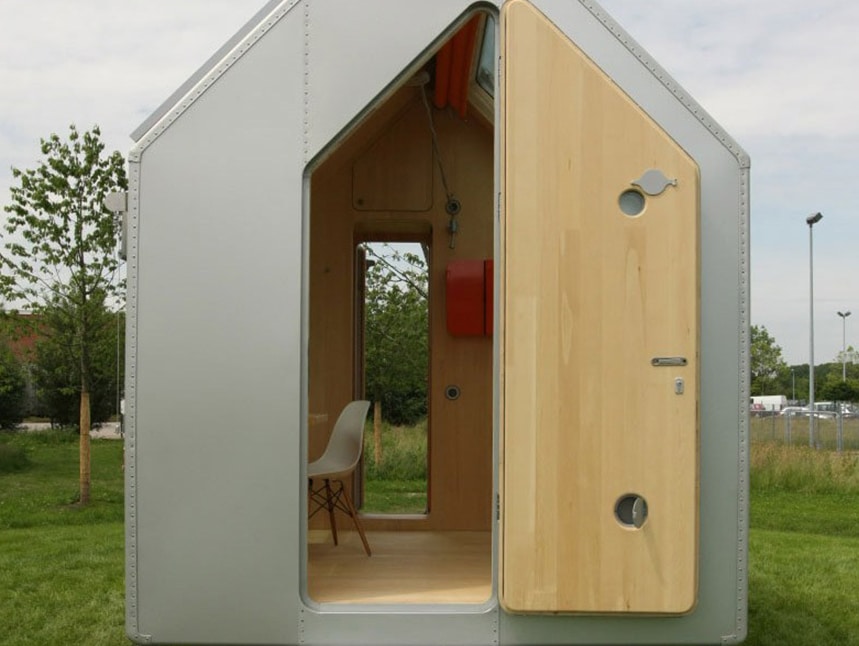
The stunning New York Times building that adds some of the glitz to the famed Manhattan skyline, The Shard that pierces the clouds of London, the Art Institute of Chicago. What do all these buildings have in common?
It’s Renzo Piano, the brilliant mind that designed these and many other beautiful structures around the world. In the last few years, Piano has added tiny homes to his already bulging portfolio.
He is particularly known for the German prototype named Diogene, a tiny house which is also entirely self-sufficient. The house, that is just about 81 sq ft, is fitted with photovoltaic cells, solar panels, a biological toilet, natural ventilation, and a tank to collect rainwater. Complete with a bathroom and kitchen, this house is soon to be a reality.
Idaho, the US: Macy Miller’s Mini Motives

If you thought that tiny houses are only for single people or are meant for a couple of bachelors, then Macy Miller will prove you completely wrong.
This Boise, Idaho-based architect designed her 196 sq ft tiny house from scratch about three years ago for herself, her partner James and her Great Dane puppy Denver. Aptly called Mini Motives, Macy spent just US$11,416 for building the entire house, and she credits the low price tag to the usage of reclaimed materials and recycling.
Today, her family has expanded to include two children and Macy has converted their attached patio to the children’s bedroom increasing the overall size of the house to 232 sq ft. It’s still tiny. And comfortable.
Seattle, the US: Chris and Malissa’s Tiny Tack House
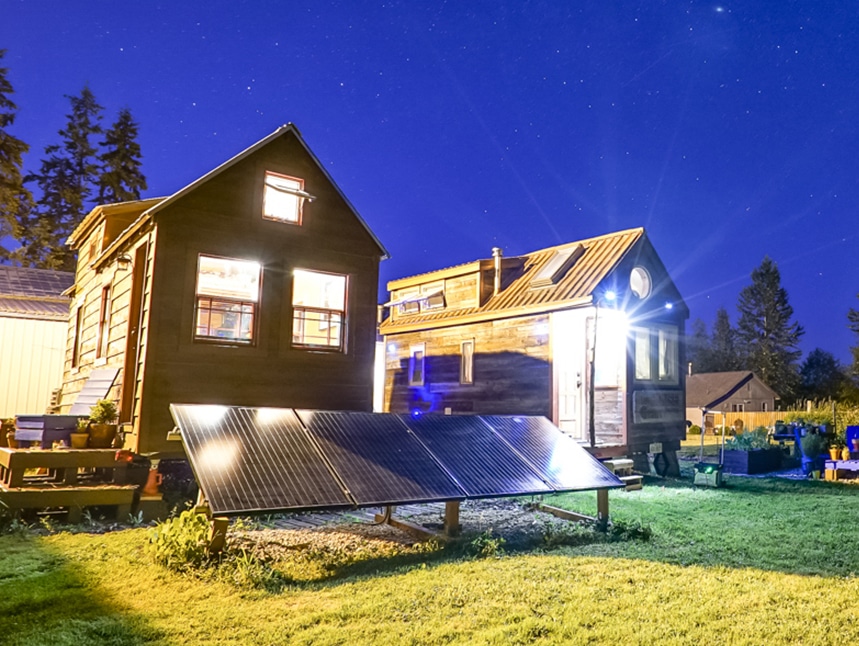
Living in small spaces can make you an incredibly better person, as Chris and Malissa Tack learnt. Their 140 sq ft home near Seattle, Washington was built in 2011 after they left their high-tech jobs and decided to downsize their lives by building their own small home.
Fitted with an extensive solar system, they can sustain themselves off the grid during sunny weather, which is a huge saving. Not just that, they have seen a marked difference in their behaviour towards each other as well, and their relationship over all. “We have definitely learned the importance of respecting space; for instance saying ‘excuse me’ when passing each other in the kitchen,” says Chris Tack.
Rome, Italy: Marco Pierazzi’s Alleyway Apartment
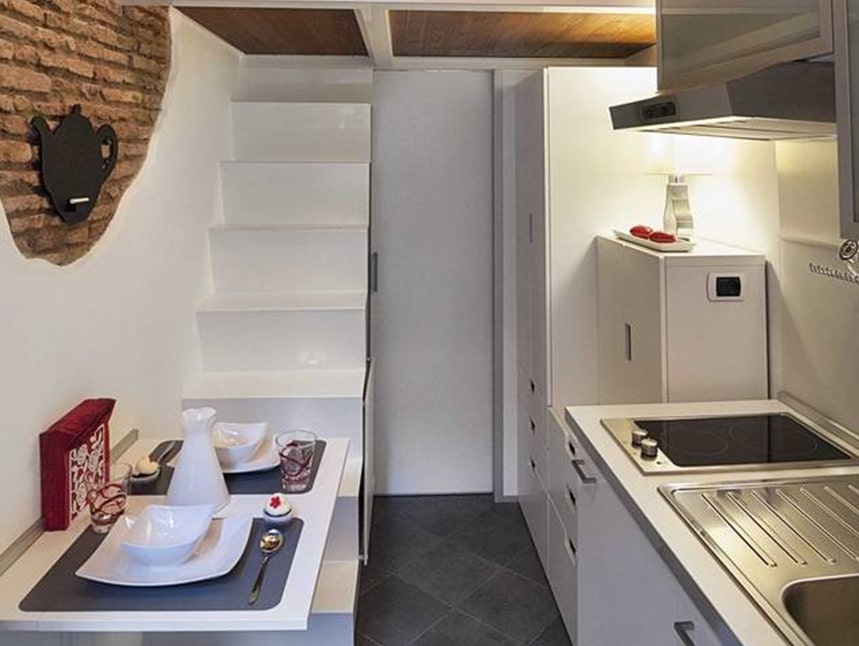
Situated just a few steps away from the Pantheon in Rome is probably the tiniest apartment in Italy.
Designed by Marco Pierazzi this 75 sq ft apartment was a crumbling old one-room house, dating back to the 1930s, situated in a narrow alley. Pierazzi saw the potential of its location and remodelled it from scratch to its current, swanky, sleek self. It has a bedroom, kitchen, and bathroom.
Pierazzi himself lived there with his wife until they had a child and had to move out. Now, he rents it out to tourists who are only too happy to be close to all the wonders that Rome has to offer.
Warsaw, Poland: Jakub Szczesny’s Keret House

Described as the skinniest house in the world, the Keret House is Polish architect Jakub Szczesny’s brainchild.
Measuring just 3 ft by 5 ft, the house launched as an art installation that is also a real living space that acts as temporary quarters for artists and writers. The house has two floors, one bathroom, a kitchen, a bedroom and a living area with natural light filtering in through transparent glass panels.
San Francisco, the US: Santa Clara University’s rEvolve House
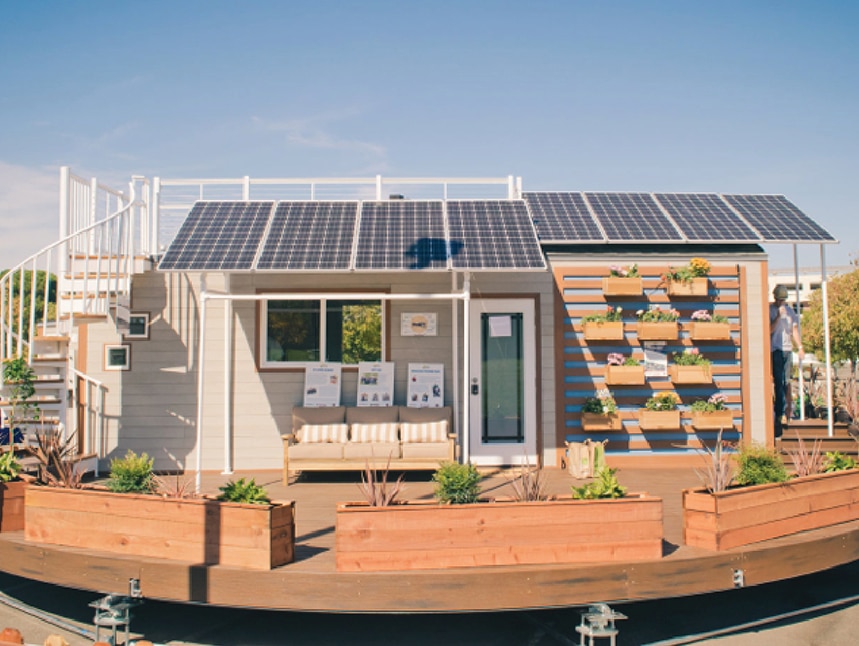
Solar energy is getting to be the most preferred eco-friendly option around the world, and a team of students from the Santa Clara University showed us the most optimum way to utilise it.
As part of the second annual Tiny House Competition, they designed and built a 238 sq ft house that can rotate to face the sun and make the most use of its energy. By the process of rotation, rEvolve can use 30% more of the sun’s energy as compared to other, standard, solar panelled houses.
Unsurprisingly, rEvolve won the first prize and it is now used as temporary housing for military veterans who are in San Francisco for a visit.
Oregon, the US: Ben and Callie’s Vintage Glam House
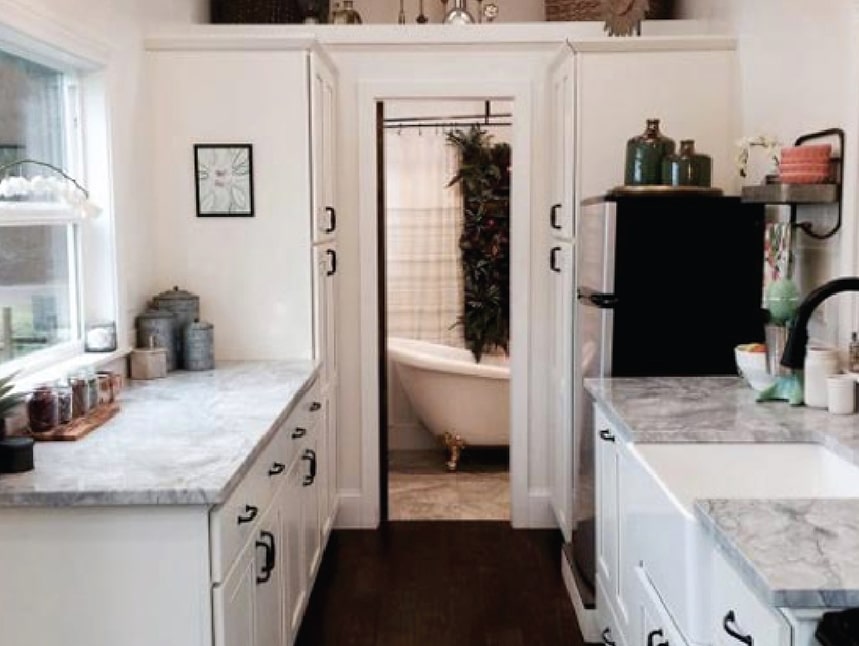
Ok, none of us would think of a tiny home as luxurious living. Well, take a look at Portland, Oregon-based couple Ben and Callie’s house, and you might change your mind.
Their 200 sq ft home features hardwood flooring, a living plant wall, a bathroom that has a skylight for one of the best views of a star studded night sky, and a platform that has a motorised bed tucked away inside.
A marble topped kitchen with all the amenities including an oven and a dishwasher, bathroom featuring an antique-style clawfoot tub, and a living room with a beautiful chandelier makes this a delightful home. It is also one of the most expensive tiny homes in the world with a price tag of US$150,000. What’s more, the entire house is propped up on 33 ft trailer!
Wales, the UK: Simon Dale’s Hobbit House
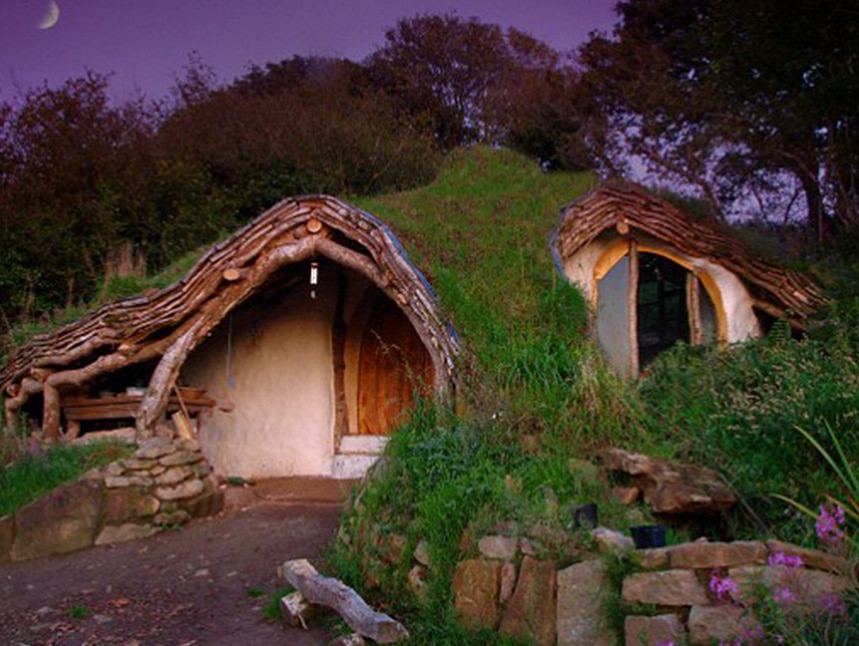
If you are a fan of The Lord of the Rings, you will love this house.
In fact, anybody would. Fairytale-like and eco-friendly at the same time, Simon Dale’s 540 sq ft house was practically scooped into the earth. Dale had big dreams of building a big house but tired of mortgages and debts, he decided to build his own house.
With very little experience of being an architect, it took him double the time, but the result is stunning. A wooden, eco-friendly home fitted with solar panels, a roof made of grass, and heated by a wood burner, all at the cost of just US$3,800. Dale built the house in just four months using completely natural and recycled materials. Natural light from skylights, water from a nearby spring, compost toilet and a fridge cooled by air blowing underground among other features make this one of the most unique tiny homes in the world.

